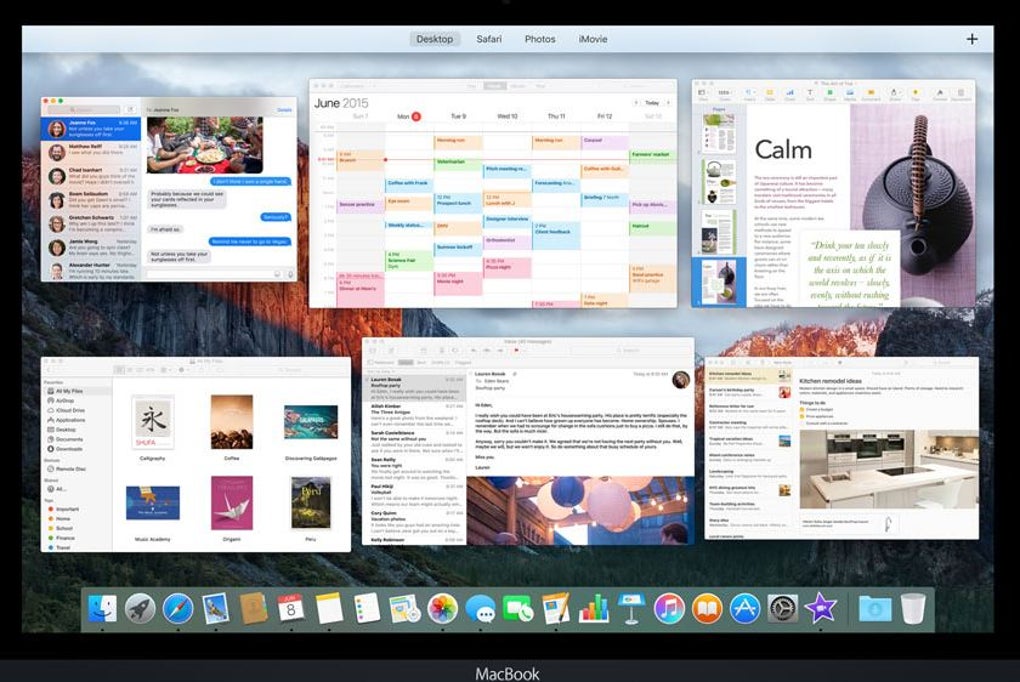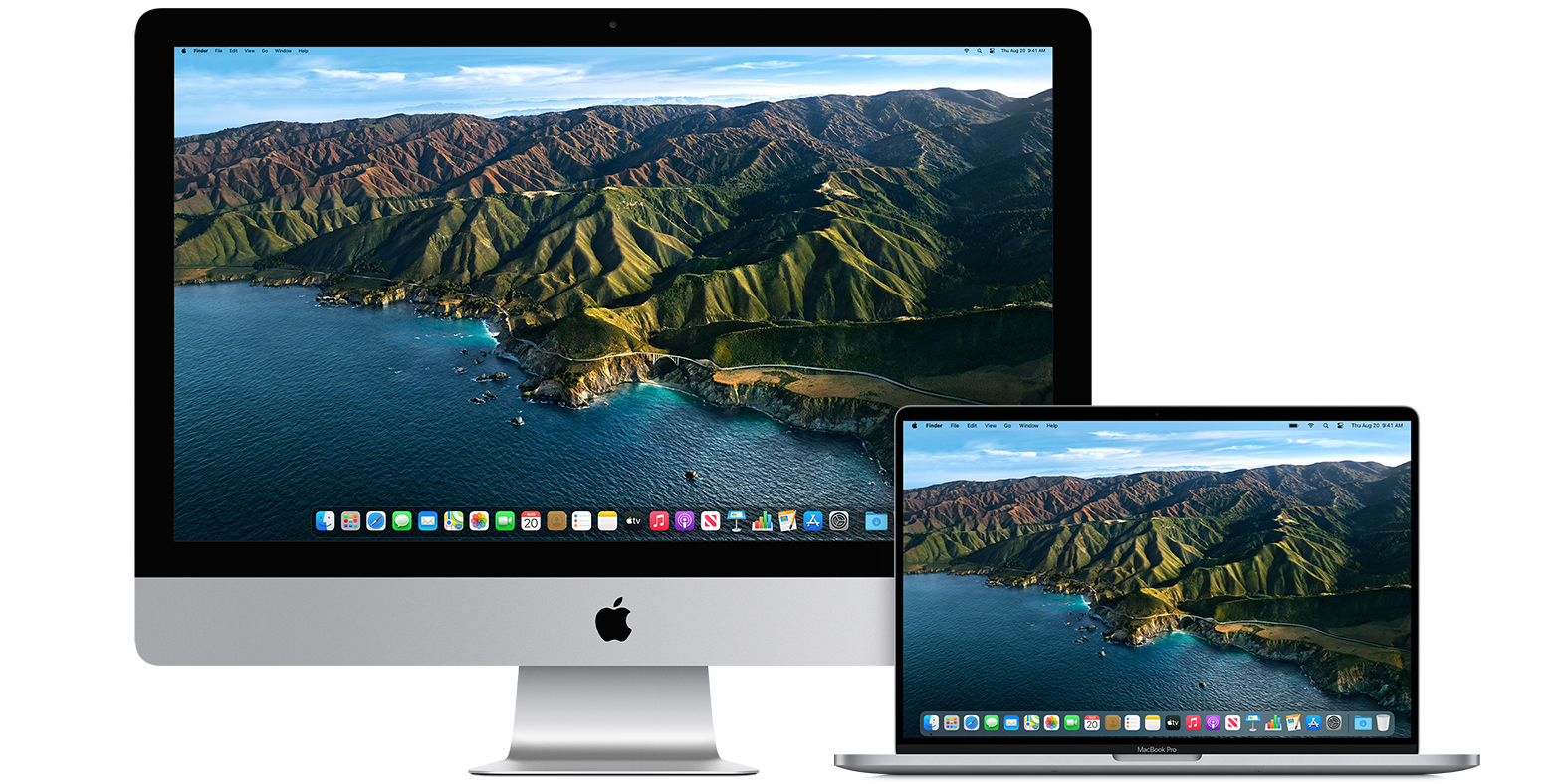- Mac Os X El Capitan Latest Version Update
- El Capitan Operating System
- Mac Os X El Capitan Release Date
Version 10.11: 'El Capitan' OS X El Capitan was revealed on June 8, 2015, during the WWDC keynote speech. It was made available as a public beta in July and was made available publicly on September 30, 2015. Open virtualbox and click ‘New’ to create a new virtual machine with the following details: Name: El Capitan Type: Mac OS X Version: Mac OS X 10.11 El Capitan (64 bit) Click next, select 4GB of RAM, and next again. Select the El Capitan image that you have downloaded and unzipped as the disk image, and create the machine.
The various ways of checking for software may only show updates to the current main system version you are running (e.g., 10.4.8 --> 10.4.11), not upgrades to a higher system version such as a jump from El Capitan (10.11) to Catalina (10.15). Note the difference between an update and an upgrade.
We can provide more specific advice if we know more about your computer model, year, and specifications. To get more information about your computer choose Apple menu > 'About This Mac' in the upper left corner of any window, then 'More Info...' or 'System Report'. Copy and paste the information here, but omit the serial number and UUIDs (if present). More about this in 'About System Information [Profiler] on your Mac' - https://support.apple.com/HT203001
You can also use the computer information and the links below to yourself determine what is possible with your computer.
Click on this link to read how to get other versions of macOS - https://support.apple.com/HT211683
- This article also has links to system requirements for each OS version which you should check against your exact computer model. Note some of the model identifier articles are outdated. For any model produced in the last 5 years or so you should use the system requirements links for each OS version instead. This web site also has a reliable presentation of model and OS version compatibility: https://eshop.macsales.com/guides/Mac_OS_X_Compatibility
- Make sure you have more RAM than what is noted as 'minimum' for any particular system or your computer may run slowly.
- You may find you need to use Safari to get links for High Sierra and later using the Mac App Store application to open a functioning page.
- Sierra, El Capitan, and Yosemite download as a .pkg. Click on this to have a converted version placed in your Applications folder as an 'Install OS...' application. Run the installer and follow the directions.
- Upgrades may take some time (up to an hour or more) to install, with restarts and blank screens.

Back up your data in case something goes wrong --> Back up your Mac with Time Machine - https://support.apple.com/HT201250 or use a cloning tool.
Check if your old apps will still work with with the OS you want to install - https://roaringapps.com/apps This is particularly critical if you are upgrading to Catalina or newer.
Feb 1, 2021 9:33 AM
Upgrading from one operating system to the another OS is the way of installing Windows or Mac operating system. In this article, you are going to learn that how to upgrade Mac OS X El Capitan to macOS Sierra 10.12. macOS Sierra 10.12 is the latest released version of Mac operating system right now. Also, you will learn that what is an upgrade and how you can do upgrade from on OS to the another version of OS.
Upgrading is the process of replacing a product with a newer version of the same product. In computing and consumer electronics an upgrade is generally a replacement of hardware, software or firmware with a newer or better version, in order to bring the system up to date or to improve its characteristics. You have two kinds of upgrading;
- Hardware upgrading
- Software upgrading
1. Hardware Upgrade
- After finding the file, if you’re going to install Mac OS X El Capitan on your Mac, take a backup of your personal files and folders. Once you’ve that, simply head to the installation and no need to worry more. This is the direct link of the Mac OS X El Capitan DMG file.
- Oct 18, 2015.
- Oct 24, 2019.
May 18, 2020. Jan 24, 2018.

Hardware upgrading is the replacement of new hardware with the old versions. Or an upgrade is a term that describes adding new hardware in a computer that improves its performance. For example, with a hardware upgrade you could replace your hard drive with an SSD and get a huge boost in performance or upgrade the RAM so the computer runs more smoothly. Like this, you can upgrade various components of the computer.
#2. Software Upgrade
To replace (a softwareprogram)with a morerecentlyreleased,enhancedversion. For example, you may be running version 10.11 of Mac OS, version 10.12 is an upgrade, and version 10.11.x is an update. Another good example of a software upgrade is upgrading your version of Windows. For example, if you had Microsoft Windows 8.1 and were upgrade to Windows 10, it would be considered a software upgrade.
Now that you have understood the meaning of upgrading and let’s get started with “How to upgrade Mac OS X El Capitan to macOS Sierra 10.12”.
Upgrade Mac OS X El Capitan to macOS Sierra 10.12
To upgrade Mac OS X El Capitan to macOS Sierra 10.12, the latest updates from Apple.Inc, Download the macOS Sierra 10.12.1 latest version from Apple App Store.
#1.Open Apple App Store then navigate to Featured tab. Find macOS Sierra from right sidebar on app store then click on. Finally, you’ll see the snapshot below and click Download. Type your apple ID with the password. It will automatically download macOS Sierra 10.12.1 in the Applicationfolder on your Mac device.

#2. Once the download process is completed navigate to the Applicationfolder or just launch the launchpad then click on macOS Sierra setup. macOS Sierra Welcome window will appear. Click Continue.
#3. Agree to the software license agreement and then hit the Agreebutton.
Agree to the License agreement
#4. If you’ve multiple disks on your device, select one of them and hit the Installbutton and click Continue
#5. It will take a minute or less than a minute. Right after that, your computer will restart.
Installing macOS Sierra on MacBook Pro
#6. Click the “Restart” button. Keep in mind that your computer may restart more than once during installation.
Mac Os X El Capitan Upgrade To Catalina
Restarting macOS Sierra 10.12
Right after clicking on Restart button, your device will automatically restart and you have to wait for some minutes to complete the installation.
#7. This may take up to 30 or 40 minutes to finish the upgrading process so just relax and set back. The duration of installation is depending on your device processor, SSD, and RAM.
#8. Now, enter your Apple ID with the password. If you were already signed in. The below screen shot may appear. Enter your Apple ID’s password or choose “Set up Later“.
Enter your Apple ID with Password
Mac Os X El Capitan Next Update
Mac Os X El Capitan Latest Version Update
#9. In the “Diagnostics & Usage” window click “Continue“.
Diagnostics & Usage
#10. Enable “Siri” if you wish then hit the “Continue” button.
Conclusion
Here we go. It’s finished now enjoy using new Apple desktop operating system “macOS Sierra 10.12”. If you have any question regarding this or our other posts, feel free to let us know. Thanks for being with dear friends.
macOS Sierra Final
If you have a mid 2009 MacBook Pro, you can't update the OS. To update, you need a MacBook Pro (Mid 2010 or later) Model 6.2 and higher.
If you are careful about what you download and where you search on the Internet, your computer is useable without the latest security updates. My last computer had a 10.6 partition which I used every night. That was after El Capitan was released, so the OS was 5 versions behind. By being careful, I never had any problems.
El Capitan Operating System
Mac Os X El Capitan Release Date
Download El Capitan Dmg
I would make sure that you had at least 2 separate backups on 2 separate drives in case you have problems. That will allow you to recover.



